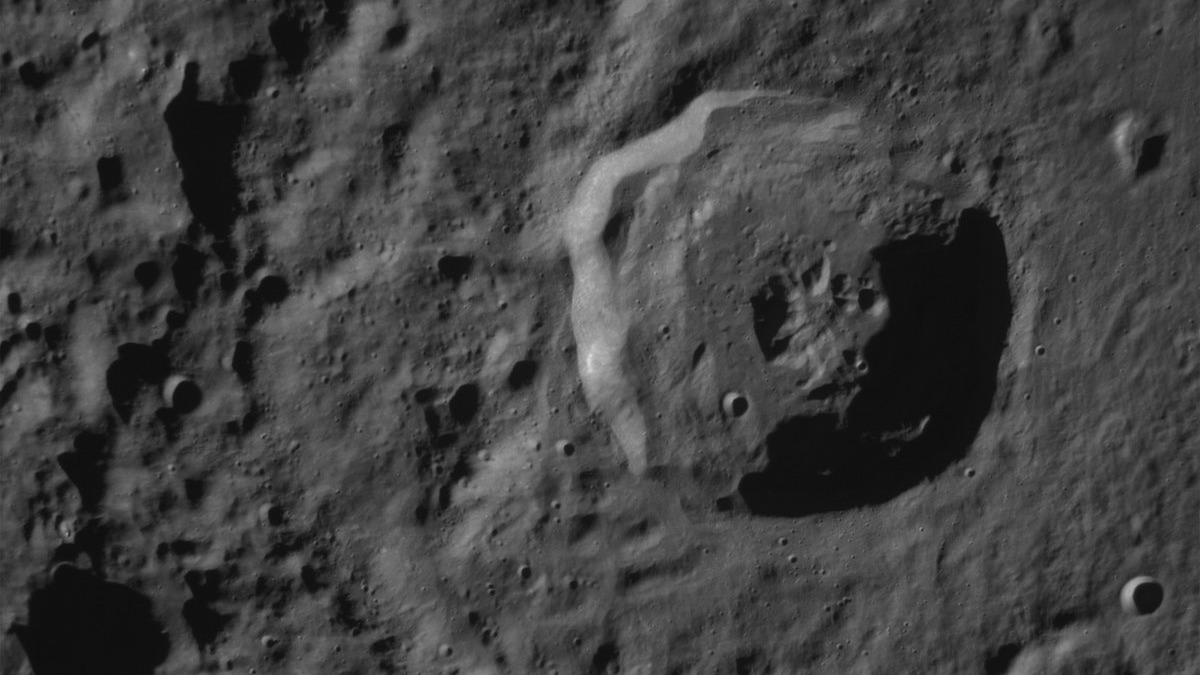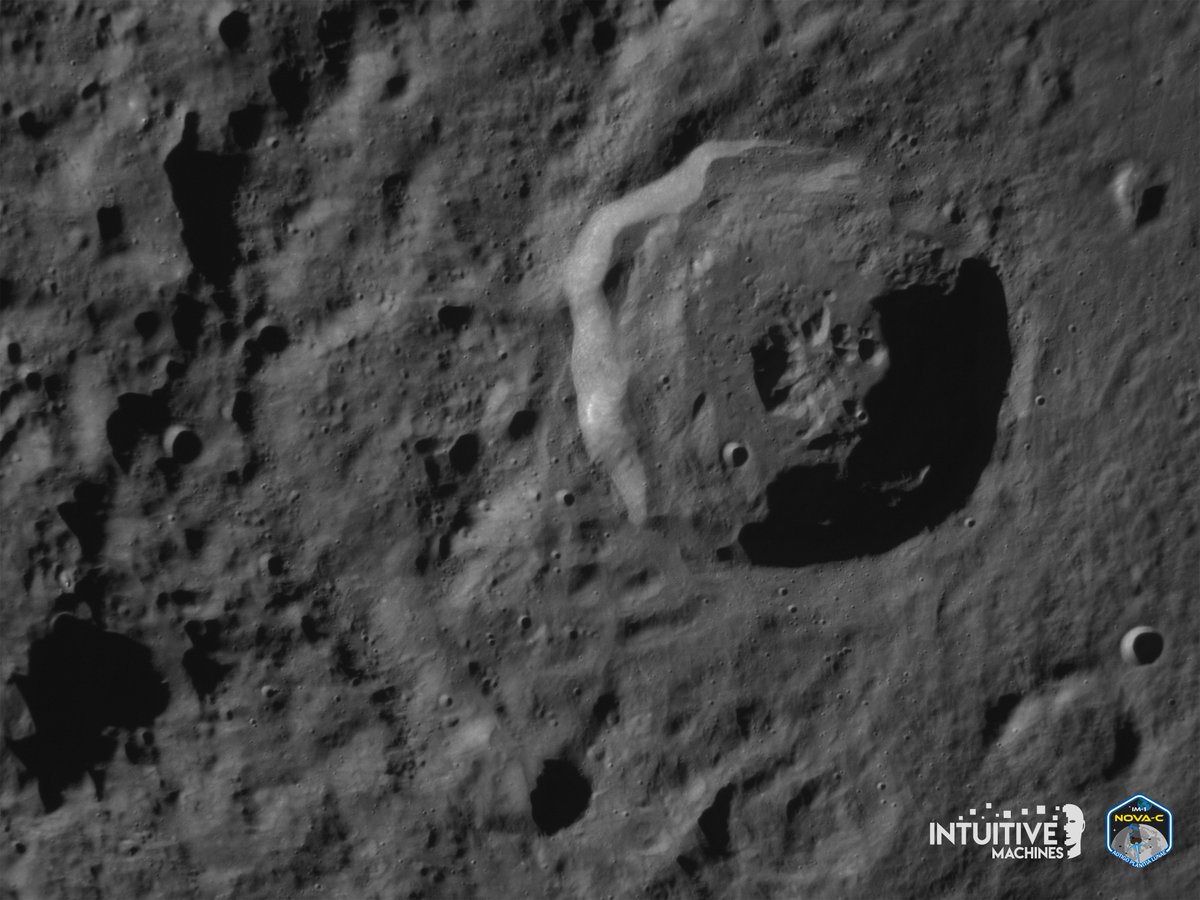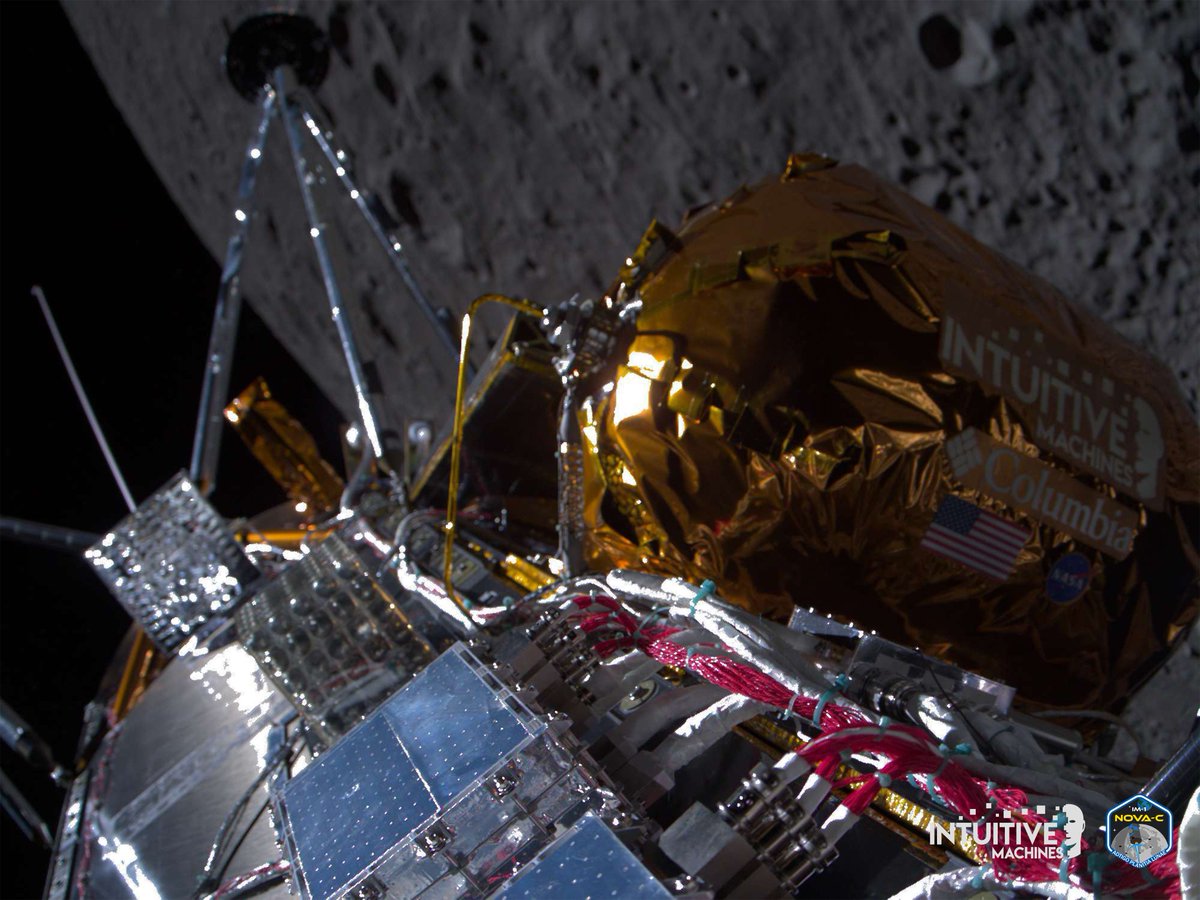
Update for 7 pm ET: Touchdown! Intuitive Machines reports that its IM-1 lander Odysseus has landed on the moon and is transmitting a faint, but definite, signal. "Houston, Odysseus has found his new home," mission director Tim Crain said.
See our full landing story, video and photos.

Hours ahead of its moon landing, Odysseus snapped a picture of a lunar crater.
The Intuitive Machines lander beamed home an image of the Bel’kovich K crater, a roughly 31-mile (50-kilometer) divot in the moon's northern equatorial highlands. Mountains in the center were "made when the crater was formed," officials wrote Wednesday (Feb. 21) on X, formerly Twitter.
Odysseus successfully entered lunar orbit on Wednesday following a crucial engine burn, and is slated to touch down near the moon's south pole on Thursday afternoon (Feb. 22) no earlier than 6:24 p.m. EST (2324 GMT). You can tune in to the landing live here at Space.com, courtesy of NASA, or directly via the space agency. Coverage will begin at 5:00 p.m. EST (2300 GMT).
Related: Missions to the moon: Past, present and future
If Odysseus makes it, the lander will be the first private machine to successfully soft land on the moon and the first American vehicle overall to do so since the crewed Apollo 17 mission achieved the feat in 1972. You can watch the attempt here at Space.com.

The mission launched on Feb. 15 on a SpaceX Falcon 9 rocket, bringing along 12 payloads for lunar investigations. Six of those experiments are from NASA and associated with the agency's Commercial Lunar Payload Services program, or CLPS.
NASA aims to use CLPS missions for science investigations ahead of the agency's Artemis program, which itself plans to put astronauts back on the moon in the 2020s and eventually establish a permanent base at the lunar south pole. The region is rich in water ice, which is useful for fueling and machinery.
One CLPS mission has already tried to reach the moon, but it didn't make it. Astrobotic's Peregrine lunar lander launched in January atop the first United Launch Alliance's Vulcan Centaur rocket. Peregrine, however, developed a fuel leak and instead was steered into Earth's atmosphere on Jan. 18.
Other private missions before Odysseus' IM-1 endeavor did indeed achieve lunar orbit before. Examples include Israel's Beresheet and Tokyo's Hakuto-R landers. Both missions, however, saw their spacecraft crash: Beresheet in April 2019 and Hakuto-R in April 2023.
This story was updated at 2:34 p.m. Feb. 22 with the updated landing time.







